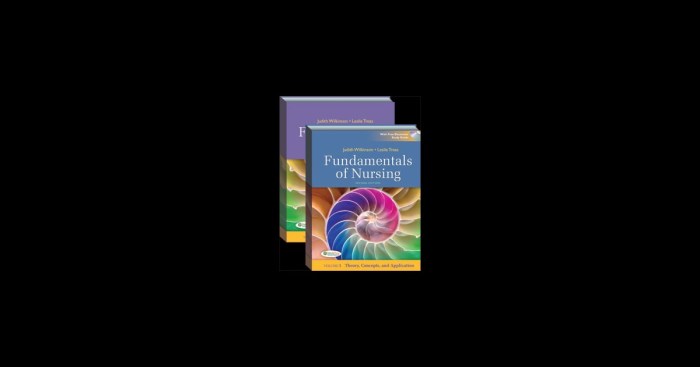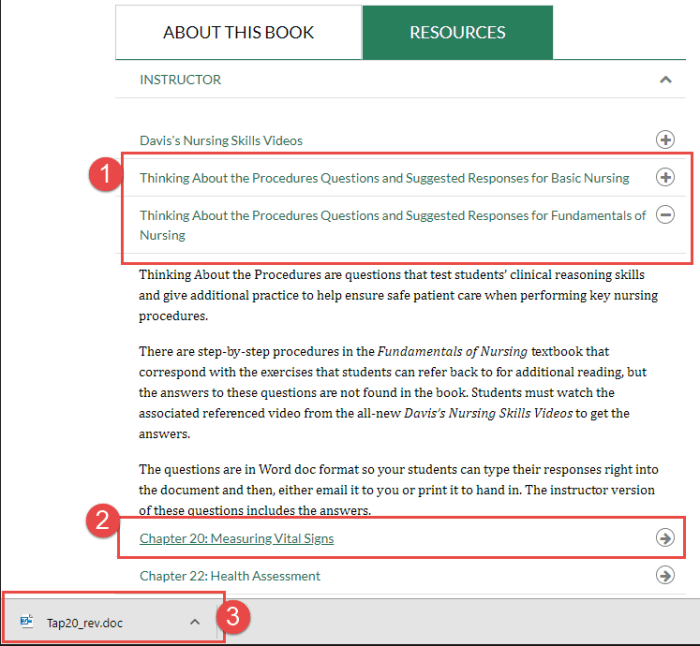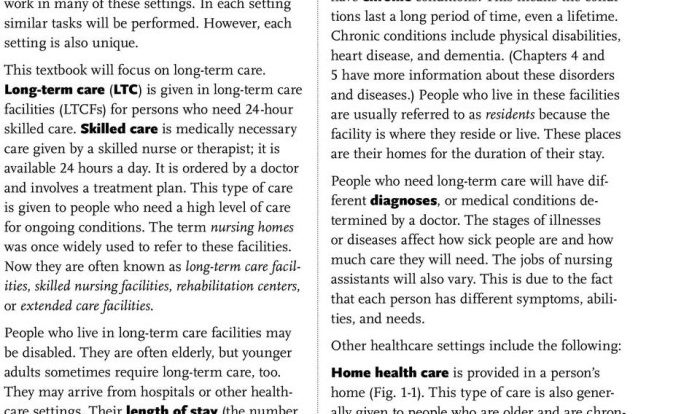FA Davis Fundamentals of Nursing is an authoritative and comprehensive textbook designed to equip nursing students with a solid foundation in the principles and practice of nursing. Written by a team of experienced nurses and educators, this book provides a clear and concise overview of the core concepts, skills, and knowledge essential for success in the nursing profession.
The book is structured in a logical and user-friendly manner, with each chapter building upon the previous one. It begins with an introduction to the nursing profession and the nursing process, followed by chapters on assessment, nursing interventions, pharmacology, patient education, ethical and legal considerations, special populations, advanced topics in nursing, and case studies.
Overview of FA Davis Fundamentals of Nursing

FA Davis Fundamentals of Nursing is a comprehensive textbook designed to provide students with a solid foundation in the principles and practices of nursing. It is written in a clear and concise style, with a strong emphasis on critical thinking and clinical reasoning.
The book is divided into four main sections: Fundamentals of Nursing, Medical-Surgical Nursing, Maternal-Child Nursing, and Psychiatric-Mental Health Nursing. Each section covers the essential concepts and skills needed to provide safe and effective nursing care in a variety of settings.
Target Audience
FA Davis Fundamentals of Nursing is primarily intended for nursing students who are enrolled in associate degree or diploma programs. However, it can also be a valuable resource for practicing nurses who are seeking to refresh their knowledge or stay up-to-date on the latest developments in nursing practice.
Structure and Organization
The book is organized into 54 chapters, each of which covers a specific topic in nursing. The chapters are grouped into four main sections, as mentioned earlier. Each chapter begins with a list of learning objectives, which helps students to focus their study and identify the key concepts that will be covered.
The chapters also include numerous case studies, critical thinking exercises, and review questions to help students to apply their knowledge and skills to real-world situations.
Core Concepts in Nursing: Fa Davis Fundamentals Of Nursing
Nursing practice is grounded in a foundation of core concepts that guide nurses’ understanding of health, illness, and the care of individuals, families, and communities. These concepts are derived from various nursing theories and models, which provide frameworks for understanding the complex interactions between individuals, their environment, and their health outcomes.
The core concepts in nursing encompass a holistic perspective that considers the physical, psychological, social, cultural, and spiritual aspects of individuals. Nurses utilize these concepts to assess, plan, implement, and evaluate nursing interventions that promote health, prevent illness, and restore well-being.
Person
- Nursing recognizes individuals as unique beings with inherent dignity, worth, and potential.
- Nurses strive to understand the individual’s perspective, values, beliefs, and preferences.
- Care is tailored to meet the specific needs and goals of each person.
Environment
- The environment encompasses the internal and external factors that influence an individual’s health and well-being.
- Nurses assess the physical, psychological, social, and cultural environment to identify potential risks and resources.
- Nursing interventions aim to create a supportive and therapeutic environment that promotes healing and recovery.
Health
- Nursing defines health as a state of well-being that encompasses physical, mental, and social dimensions.
- Nurses promote health by educating individuals about healthy behaviors, providing preventive care, and supporting self-management.
- Nursing interventions focus on maintaining and restoring health, preventing illness, and managing chronic conditions.
Nursing
- Nursing is a profession that provides care to individuals, families, and communities.
- Nurses use their knowledge, skills, and compassion to promote health, prevent illness, and restore well-being.
- Nursing practice is guided by ethical principles, evidence-based practice, and a commitment to patient-centered care.
Assessment and Nursing Care
Nursing assessment is the systematic and continuous process of collecting, validating, and analyzing data about a patient’s health status. It is the foundation for developing a nursing care plan and providing individualized care. The assessment process involves gathering information from various sources, including the patient, family members, medical records, and physical examination findings.The
importance of nursing assessment cannot be overstated. It provides nurses with a comprehensive understanding of the patient’s condition, identifies potential problems, and establishes a baseline for monitoring progress. The assessment process also helps nurses to identify and prioritize nursing interventions, which are actions taken by nurses to promote, maintain, or restore a patient’s health.
Types of Nursing Interventions
There are various types of nursing interventions, each with its own specific purpose and application. Some common types of nursing interventions include:
- Independent nursing interventionsare those that nurses can perform without a physician’s order.
- Dependent nursing interventionsare those that require a physician’s order to be performed.
- Collaborative nursing interventionsare those that nurses perform in collaboration with other healthcare professionals.
The choice of nursing intervention depends on the patient’s individual needs and the goals of care. Nurses must have a thorough understanding of the different types of nursing interventions and their applications in order to provide safe and effective care.
Pharmacology and Medication Administration
Pharmacology is the study of drugs, their actions, and their uses. Medication administration is the process of giving medications to patients. Both pharmacology and medication administration are essential to the practice of nursing.
The principles of pharmacology include the following:
- Drugs are chemicals that interact with the body to produce a specific effect.
- The effect of a drug depends on its dose, route of administration, and the individual patient.
- Drugs can be used to treat a variety of conditions, including infections, pain, and cancer.
The principles of medication administration include the following:
- Medications must be administered safely and effectively.
- Nurses must be familiar with the medications they are administering.
- Nurses must follow the prescriber’s orders carefully.
Calculating and administering medications safely is essential to the practice of nursing. Nurses must be able to accurately calculate medication doses and administer them safely. The following steps are involved in calculating and administering medications:
- Check the prescriber’s orders.
- Calculate the medication dose.
- Prepare the medication.
- Administer the medication.
- Document the medication administration.
By following these steps, nurses can ensure that medications are administered safely and effectively.
Patient Education and Health Promotion
Nurses play a pivotal role in patient education and health promotion, empowering individuals to make informed decisions about their health and well-being. They provide accurate information, facilitate understanding, and foster self-management skills.
Effective Communication Strategies
Effective communication is crucial for successful patient education. Nurses should:
- Use clear and concise language, avoiding medical jargon.
- Actively listen to patients’ concerns and perspectives.
- Tailor information to the patient’s literacy level and cultural background.
- Use visual aids and demonstrations to enhance understanding.
- Provide written materials and resources for reinforcement.
Empowering Patients
Patient education aims to empower individuals to actively participate in their health care. Nurses should:
- Promote self-management through goal setting and problem-solving.
- Encourage patients to seek information and make informed choices.
- Support patients in developing healthy lifestyle behaviors.
- Collaborate with interdisciplinary teams to provide comprehensive care.
Ethical and Legal Considerations
Ethical and legal issues are an integral part of nursing practice. Nurses have a duty to provide safe, competent, and compassionate care to their patients. They must also respect the patient’s autonomy, privacy, and confidentiality.
Some of the most common ethical and legal issues encountered in nursing practice include:
- Informed consent
- Patient confidentiality
- End-of-life care
- Organ donation
- Research ethics
Nurses must be able to identify these issues and navigate them in a way that protects the patient’s rights and ensures the delivery of high-quality care.
Maintaining Patient Confidentiality
Patient confidentiality is a fundamental ethical and legal obligation for nurses. Nurses must protect the privacy of their patients and keep their medical information confidential.
There are a few exceptions to this rule, such as when a nurse is required to report suspected child abuse or neglect. However, in general, nurses must not disclose patient information without the patient’s consent.
Nurses can maintain patient confidentiality by:
- Only discussing patient information with other healthcare professionals who need to know
- Storing patient information securely
- Using discretion when discussing patient information in public
By following these guidelines, nurses can help to protect their patients’ privacy and maintain the trust that is essential for a therapeutic relationship.
Special Populations
Providing nursing care to patients from diverse backgrounds requires cultural sensitivity and an understanding of their unique needs. Cultural competence involves recognizing and respecting cultural differences, values, beliefs, and practices that influence health and illness experiences.
Culturally sensitive nursing care considers the patient’s cultural background, language, communication style, health beliefs, and values. It involves adapting care plans to meet the specific needs of the patient and their family.
Examples of Culturally Sensitive Nursing Care, Fa davis fundamentals of nursing
- Using an interpreter to facilitate communication with patients who do not speak English.
- Providing culturally appropriate food options for patients.
- Respecting the patient’s religious beliefs and practices.
- Understanding the patient’s family structure and support system.
- Considering the patient’s cultural beliefs about health and illness when developing a care plan.
Advanced Topics in Nursing

As nursing practice evolves, specialized areas of nursing have emerged, requiring advanced knowledge and skills. These advanced roles include critical care nursing, emergency nursing, and nurse anesthesia, among others.
Nurses in these roles are responsible for managing complex and critically ill patients, often in high-stress environments. They require a deep understanding of pathophysiology, pharmacology, and advanced nursing interventions.
Critical Care Nursing
Critical care nurses provide care to critically ill patients in intensive care units (ICUs) and other critical care settings. They monitor and manage patients with life-threatening conditions, such as respiratory failure, cardiac arrest, and sepsis.
- Knowledge and Skills:Advanced knowledge of critical care medicine, hemodynamics, ventilator management, and resuscitation techniques.
- Education and Training:Critical care nursing certification (CCRN) or equivalent, often obtained through a graduate-level program or specialized training.
Emergency Nursing
Emergency nurses provide care to patients in emergency departments and urgent care settings. They assess and stabilize patients with acute injuries or illnesses, often under time constraints and in chaotic environments.
- Knowledge and Skills:Advanced knowledge of emergency medicine, trauma management, and triage protocols.
- Education and Training:Emergency nursing certification (CEN) or equivalent, often obtained through a graduate-level program or specialized training.
Case Studies and Clinical Applications

FA Davis Fundamentals of Nursing features engaging case studies and clinical applications that illustrate the practical application of nursing concepts in real-world settings. These case studies provide opportunities for students to analyze and apply their knowledge, fostering critical thinking and problem-solving skills.
Case Studies
The case studies in FA Davis Fundamentals of Nursing present a variety of patient scenarios, ranging from common health conditions to complex medical issues. Students are tasked with assessing the patient’s condition, developing a nursing care plan, and evaluating the effectiveness of interventions.
Clinical Applications
The clinical applications in FA Davis Fundamentals of Nursing provide opportunities for students to apply their knowledge in simulated clinical settings. These applications may include role-playing exercises, simulations, or virtual reality experiences that allow students to practice their nursing skills in a safe and controlled environment.
Study Aids and Resources
FA Davis Fundamentals of Nursing provides a comprehensive suite of study tools and resources to enhance student learning. These resources are designed to reinforce key concepts, facilitate self-assessment, and promote critical thinking.
To effectively utilize these resources, students should:
- Review the study tools and resources available at the beginning of each chapter.
- Incorporate the use of study tools into their study routine.
- Utilize the resources to test their understanding and identify areas for improvement.
Chapter Objectives
Each chapter begins with a list of objectives that Artikel the key concepts covered in the chapter. Students should review these objectives before reading the chapter to focus their study and identify areas where they need additional support.
Chapter Summaries
Chapter summaries provide a concise overview of the key points covered in the chapter. Students should review the summaries after reading the chapter to reinforce their understanding and identify any areas that need further clarification.
Review Questions
Review questions are available at the end of each chapter to test students’ understanding of the material. These questions cover a range of topics and difficulty levels, allowing students to assess their knowledge and identify areas where they need additional study.
Case Studies
Case studies present real-world scenarios that challenge students to apply their knowledge and critical thinking skills. Students should analyze the case studies and develop a plan of care that demonstrates their understanding of the nursing process and relevant nursing interventions.
Interactive Online Resources
The FA Davis website provides access to a variety of interactive online resources, including:
- Interactive quizzes and games
- Virtual simulations
- Case studies with discussion forums
These resources provide students with additional opportunities to engage with the material and reinforce their learning.
Answers to Common Questions
What is the purpose of FA Davis Fundamentals of Nursing?
FA Davis Fundamentals of Nursing is a comprehensive textbook designed to provide nursing students with a solid foundation in the principles and practice of nursing.
Who is the target audience for FA Davis Fundamentals of Nursing?
FA Davis Fundamentals of Nursing is primarily intended for nursing students at all levels, from pre-nursing to graduate students.
What are the key features of FA Davis Fundamentals of Nursing?
FA Davis Fundamentals of Nursing is known for its clear and concise writing style, logical organization, and wealth of learning aids, including case studies, review questions, and interactive exercises.

